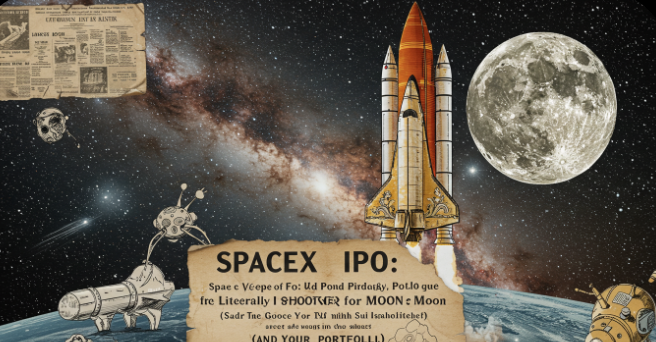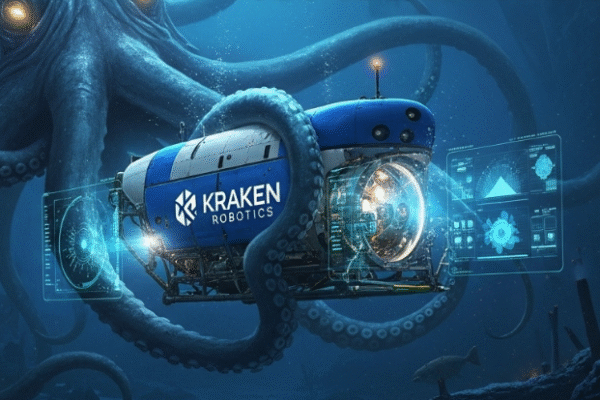SpaceX IPO: Literally Shooting for the Moon (And Your Portfolio)

NOT FINANCIAL ADVISE
Expected IPO: 2025-2026 | Estimated Valuation: $350+ Billion | Target Entry: Day One
SpaceX represents the most anticipated IPO since Facebook decided to monetize your personal life, except this time instead of selling your data, they’re selling rocket rides to Mars. With over $13 billion in annual revenue and a $350 billion valuation, Elon Musk’s space venture has transformed from “billionaire’s expensive hobby” to “the company that makes NASA look like they’re using public transportation.” The potential Starlink spinoff serves 4.5 million customers who apparently prefer their internet beamed down from space rather than crawled through underground cables, because honestly, everything sounds cooler when satellites are involved. It’s like investing in the company that’s simultaneously fixing rural broadband and planning humanity’s backup planet, which is peak Elon efficiency.
The Starlink Goldmine: Internet from Space (Because Why Not?)
Starlink has evolved from “crazy idea involving thousands of satellites” to “legitimate business serving 4.5 million customers globally,” proving that sometimes the most ridiculous-sounding plans actually work. The satellite internet constellation currently generates a growing share of SpaceX’s $13+ billion annual revenue while expanding into emerging markets where terrestrial internet is about as reliable as weather forecasts.

The beauty of Starlink is that it solved the “last mile” problem by eliminating the last 340 miles entirely. Instead of running cables to remote locations, they just launched an entire internet infrastructure into orbit. It’s like deciding that instead of building roads to your house, you’ll just use helicopters for everything, except the helicopters are autonomous and there are thousands of them.
Average revenue per user growth and expanding market penetration create recurring revenue streams that don’t depend on convincing people to buy $100,000 rockets. The subscription model generates predictable cash flows while the satellite constellation becomes more valuable with each additional user, creating network effects that would make social media companies jealous.
Launch Services: The Uber of Space Transportation
SpaceX completed over 138 successful launches in 2024, making space access so routine that rocket launches have become less “historic achievement” and more “Tuesday afternoon logistics.” The company’s reusable Falcon 9 system has dramatically reduced launch costs while increasing frequency, turning space transportation from exclusive government program into competitive commercial service.
The rocket reusability breakthrough represents one of the most significant cost innovations in aerospace history. Instead of throwing away entire rocket systems after single use, SpaceX figured out how to land them back on Earth and use them again. It’s like the airline industry discovering they could reuse planes instead of building new ones for every flight, except it took rocket scientists to figure this out.
Government contracts from NASA and the Department of Defense provide stable revenue foundations while commercial satellite deployments create growth opportunities as the space economy expands. The combination of proven reliability and cost efficiency positions SpaceX as the dominant launch provider in an increasingly crowded market.
Starship: The Mars Express (Eventually)
Starship represents SpaceX’s long-term vision transformed into massive stainless steel reality, designed to carry cargo and passengers to the Moon, Mars, and presumably wherever else humans decide needs visiting. The fully reusable heavy-lift vehicle is contracted for future Artemis missions, making SpaceX NASA’s preferred partner for returning to the Moon and eventually establishing permanent lunar presence.
The development timeline follows typical SpaceX patterns of “wildly optimistic initial estimates followed by impressive eventual delivery.” Starship orbital test flights, refueling demonstrations, and successful payload deployments will serve as key milestones that either validate the interplanetary transportation business model or provide expensive lessons in rocket development.
Beyond government contracts, Starship creates opportunities in space mining, lunar tourism, and Mars colonization services, because apparently SpaceX’s business plan includes literally every science fiction concept except time travel. The vehicle’s massive payload capacity enables entirely new space-based industries while supporting SpaceX’s ultimate goal of making humanity a multi-planetary species.
Investment Opportunity: The Final Frontier Portfolio
The SpaceX IPO represents exposure to multiple high-growth markets simultaneously: satellite internet, commercial space transportation, government aerospace contracts, and speculative interplanetary development. It’s like buying stock in the company that’s simultaneously Amazon Prime for space, AT&T for rural areas, and the transportation department for future Mars colonies.
The company’s technological advantages create competitive moats that are literally rocket science to replicate. The combination of reusable launch systems, operational satellite constellations, and proven customer relationships establishes barriers to entry that require billions of dollars and years of development to overcome.
SpaceX’s position as both launch provider and satellite operator creates vertical integration advantages while serving as platform for other space-based services. The company benefits from the entire space economy expansion rather than dependence on specific applications or customer segments.
Risk Assessment: What Could Go Wrong in Space
Regulatory hurdles represent significant risks as SpaceX operates across multiple highly regulated industries including defense, telecommunications, and aerospace. Export restrictions, spectrum allocation disputes, and environmental reviews could delay expansion plans or limit market access, because apparently even space exploration requires paperwork.
Competition is intensifying as Amazon’s Project Kuiper prepares to launch thousands of satellites, Blue Origin develops competing launch systems, and traditional aerospace companies invest heavily in reusable technologies. The space economy’s attractiveness inevitably draws well-funded competitors seeking market share in growing industries.
Technical risks inherent in rocket development could impact investor confidence and operational timelines. Launch failures, Starship development delays, or satellite constellation malfunctions could create volatility while the company scales operations and develops next-generation technologies.
The IPO Catalyst: Timing and Valuation
Market speculation suggests SpaceX could pursue IPO or Starlink spinoff by 2025-2026, depending on market conditions and capital requirements for Mars development programs. The December 2024 valuation of $350 billion provides baseline expectations while continued revenue growth and milestone achievements could drive premium pricing.
The IPO structure remains uncertain, with potential Starlink spinoff allowing investors direct exposure to satellite internet growth while maintaining SpaceX’s private status for Mars development activities. Either approach creates investment opportunities in proven space-based revenue streams with speculative upside from interplanetary ambitions.
Key catalysts include successful Starship orbital flights, Starlink profitability milestones, major government contract wins, and favorable regulatory developments. The convergence of these factors could create optimal IPO timing while maximizing investor interest and valuation multiples.
Investment Strategy: Ground Control to Major Gains
For investors seeking exposure to the space economy through the industry’s dominant player, SpaceX represents the ultimate “shoot for the stars” investment opportunity. The company combines proven business fundamentals with transformative technology development and visionary leadership that has consistently delivered on seemingly impossible promises.
The recommendation is aggressive accumulation on IPO day with long-term holding strategy, because betting against Elon Musk’s ability to turn science fiction into profitable reality has historically been expensive mistake. Position sizing should reflect both the exceptional growth potential and inherent volatility of investing in companies that literally rocket science their way to success.
SpaceX has successfully evolved from startup with Mars dreams to comprehensive space services company with Mars plans, creating multiple pathways to exponential value creation as the space economy expands from government programs to commercial necessity. It’s the investment opportunity where your returns could literally be astronomical.
Disclaimer: This analysis contains references to Mars colonization and should not be considered personalized investment advice. Past performance does not guarantee future results, though SpaceX’s track record suggests they’re remarkably good at making impossible things look inevitable. Consult with a qualified financial advisor who hopefully understands both rocket science and investment risk management.
Expected IPO Date: 2025-2026
Next Review: Upon IPO announcement
You may also like
Archives
Calendar
| M | T | W | T | F | S | S |
|---|---|---|---|---|---|---|
| 1 | 2 | 3 | 4 | |||
| 5 | 6 | 7 | 8 | 9 | 10 | 11 |
| 12 | 13 | 14 | 15 | 16 | 17 | 18 |
| 19 | 20 | 21 | 22 | 23 | 24 | 25 |
| 26 | 27 | 28 | 29 | 30 | 31 | |



Leave a Reply